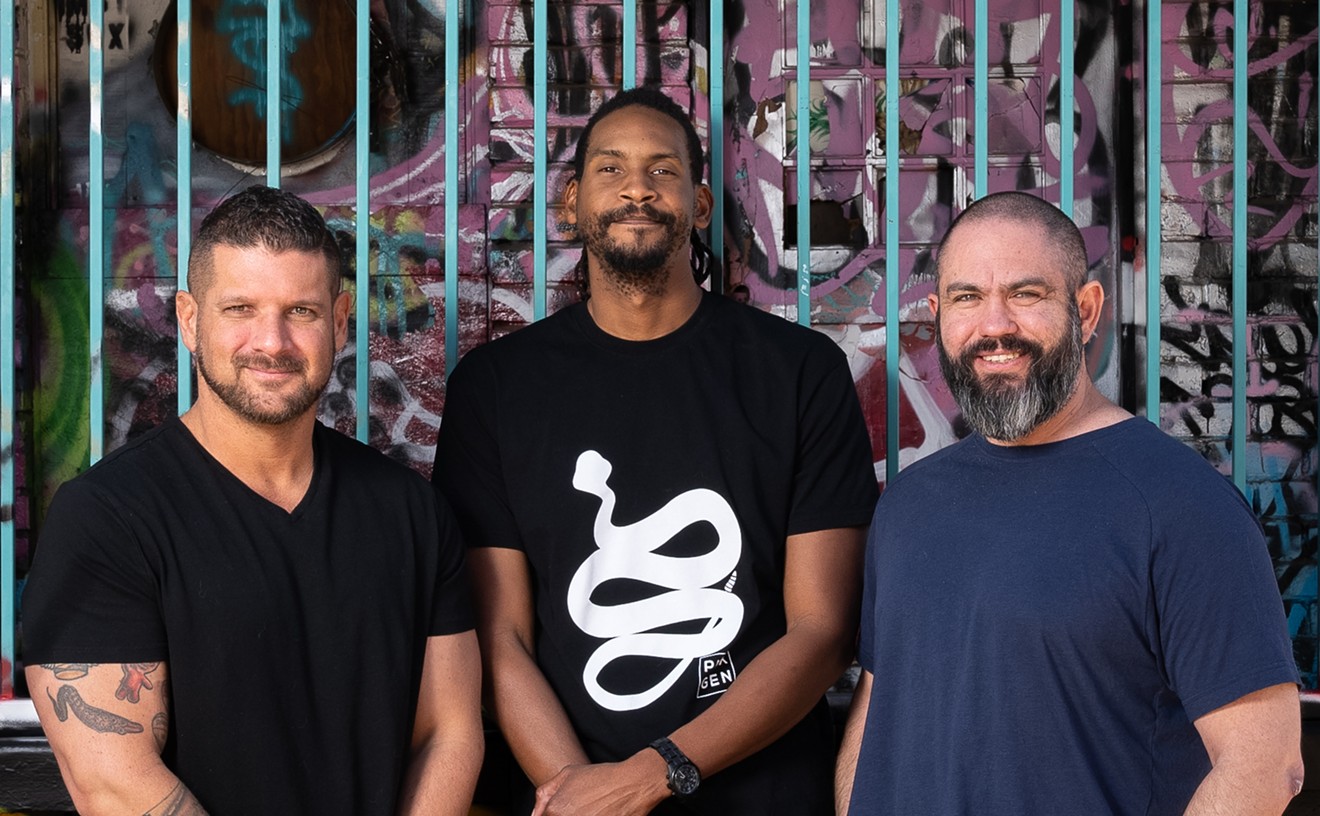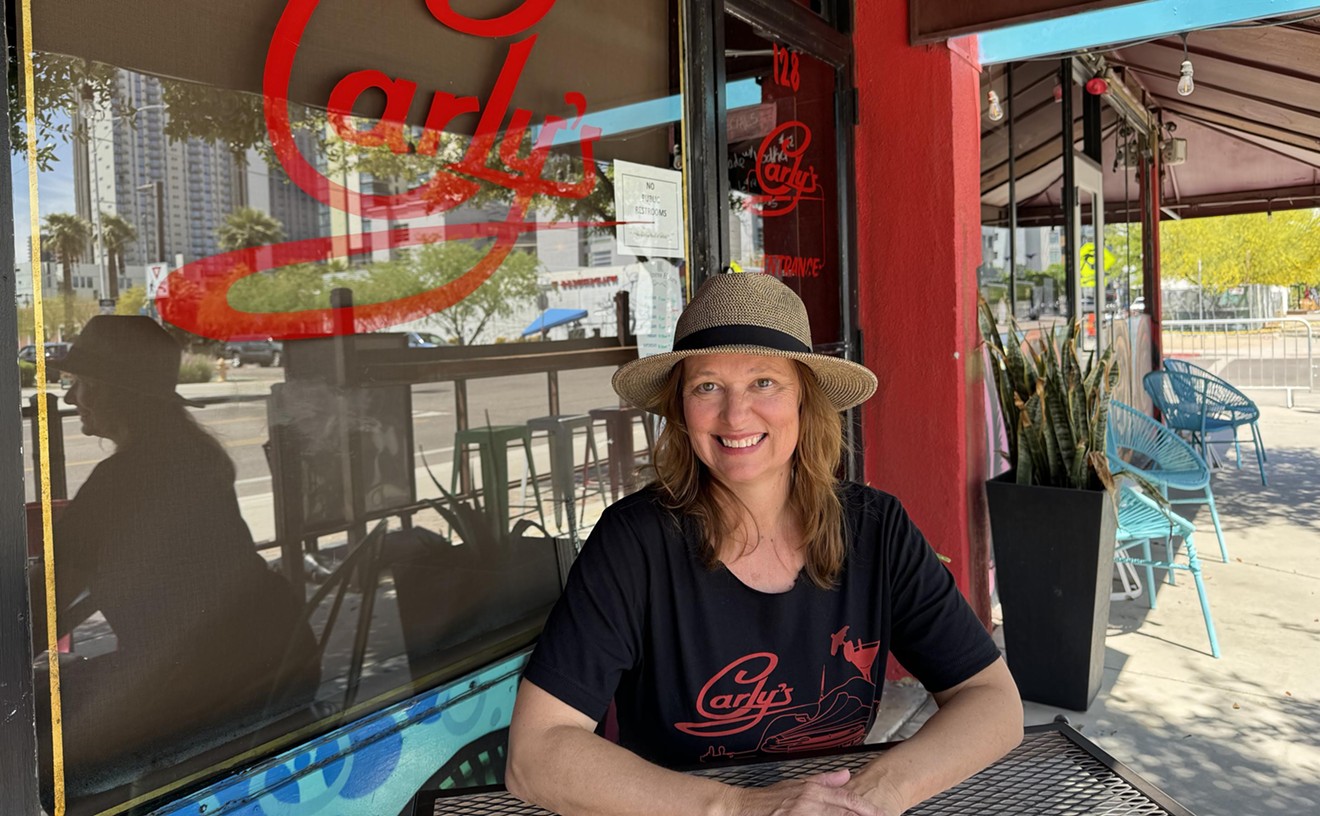Perry Czopp is something of a coffee wunderkind. At just 25 years old, Perry will compete in this year's United States Barista Championship and has ownership stakes in two separate local companies (The Coffee Chop and Silent Flight Coffee). He recently went to visit the Costa Rican farmers who produced his championship coffee. We checked in with Perry to learn more about the journey coffee takes from tree to cup.
See also: Peixoto Coffee Brings Crop-to-Cup Brazilian Coffee to Chandler First of all, Perry, Where are you?
For 5 weeks I will be in the Tarrazu Region of Costa Rica, one of eight coffee-producing regions in the country, and considered to be the most prestigious. More specifically I am smack in the middle of two small towns; San Marcos de Tarrazu and Santa Maria de Dota. There is only one main, paved, two way road right in front of the house I am staying in which connects the two towns. In terms of the whole country I am more towards the West Coast and about in the middle latitude-wise; a 2 hour drive South West of the capitol, San Jose.
Because Tarazzu is nestled in the Los Santos mountain range I typically find myself between 1500-1800 meters above sea level. It is warmer, sunnier, and drier at lower altitudes and cooler, cloudy, and more humid at higher altitudes. The days are warm and the temperature drops in the evening, night, until morning. The terrain is extremely lush and there isn't really a summer and winter. The temperature more or less stays the same, while they have a dry and wet season. Right now we are in the dry season.
How did you wind up at this particular farm?
I have been wanting to go to origin for a very long time, since I have been in the industry for over 5 years. It is not an easy task since it can be very expensive. The language and culture is so different, and I didn't even know where to start.
In October I competed in the Big Western Barista Championship. I started looking for a coffee to use a month or so earlier and reached out to my friends at Bodhi Leaf Coffee Traders, a green/raw coffee importer and distributor in Orange County, CA. They recommended a coffee grown by Manuel Montero in Costa Rica because it was cupping well, scoring in the high 80's and low 90's (out of 100). They had the most information on it, and even had a contact with the producer. After many emails back and forth with both Manuel and his brother Carlos during my construction of my competition presentation, Carlos invited me to stay with him and immerse myself in Costa Rican coffee and culture. Ten minutes after receiving that email I had booked my flight to San Jose.
How does coffee get from a tree to our cups?
Coffee starts as a seed which we usually dry, ship, roast, grind, brew, and drink, but in this case it is kept wet and germinated in a small pot until it becomes a baby coffee plant. Once it has aged a year or two in a nursery it will be transplanted into the field where it will not yield actual coffee cherries for another 2 or 3 years.
Once the coffee tree begins to produce the coffee berry, a team of coffee pickers hired by the plantation's owner will do their best to pick the ripest of the berries. In Costa Rica, they pass through the plantation first in mid-December collecting the berries that have ripened and leaving the unripe coffee to mature on the tree. The peak of harvest is a month later in mid-January where they have to be careful not to pick the overripe and underripe cherries. The best coffee is produced during the peak of the harvest. The last pass takes place in the end of February.
The pickers get paid by volume rather than weight and end up making about $50 a day for a very difficult job. They need to trek through extremely steep hills with a heavy basket full of berries around their waist, often having to reach very far to pick the coffee. From (their baskets), they will fill the farmers' truck with the day's pick in order to be transported to the processing plant.
Many farmers choose to take their coffee to a cooperative processing mill, while a select group of farmers have decided to invest in building their own processing plants. There is a huge revolution happening in Costa Rica where more and more farmers are choosing to build their own "microbeneficio" in hopes to make more money, connect with the consumers, and make a better product. Both the co-ops and the micros have their pros and cons, but the atmosphere has become very political and somewhat complicated due to the shift in processing and selling.
Once the coffee cherries are taken to either the co-op or the micro, a door on the back of the trucks is opened and the coffee cherries are shoveled into a tiled holding tank. Fresh water is turned on to push the coffee from the holding tank into a de-pulper. The de-pulper will take the fruit / cherry / pulp off of the seed / bean. There is often a step before and after this where the cherries will go into a pool of water so that the under- or overripe cherries will float to the top to be scooped away, while the good cherries go to the de-pulper.
Once coffee cherries are de-pulped the farmers often have an option of how much mucilage, or "honey," is left on the bean. Leaving 0%, 25%, 50%, 75%, or all of the mucilage on the seed/bean will greatly affect the taste that the coffee will have.
After the coffee is de-pulped, it is laid out in the sun to dry for 5-10 days on concrete patios or raised, porous drying beds. Moving the now clean coffee from the holding tank to the drying beds is hard physical labor!
The amount of time the coffee takes to dry and how often the coffee is turned or moved in order to ensure even drying also affects the taste that the coffee will have. The work of turning the coffee in the hot sun, constantly, all day long, is exhausting and monotonous.
Once the coffee is dried to a moisture content of 10-12% it is packaged as quickly as possible and moved to a temperature-controlled warehouse. This is also a lot of hard work, putting the coffee in a bag and carrying it on your back into the warehouse.
At this point the farmer or co-op has already sold off the lot, or they begin looking for a buyer. Usually the farmer will sell to an exporter, but they may also sell to a roaster or importer. Once the coffee is sold it still needs to have another layer called the parchment removed, which is a hard shell that needs to be cracked off (usually by the exporter.)
Often the buyer of the coffee will take a sample to roast and cup in order to grade the quality and name a price that they are willing to buy the coffee for.
Once the coffee is dry milled, packaged, placed on a container with thousands of other coffee bags, brought into the country, sold to a roaster, and roasted (which is a whole other story in itself), it can finally be enjoyed by the consumer.
What are some of the challenges associated with coffee farming?
One of the challenges I have seen is that there is just not enough time in the day. If the farmer isn't in the fields picking up coffee, they are taking it to be milled, or washing it themselves, or putting it out to dry, or turning the coffee, etc.
If they made more money it would be a great help to hire more employees. It would also result in a better cup. In Costa Rica, they don't rely on the internet as much as we do in the states, which is beautiful, but also hurts them {when it comes to} selling their coffee. There is a very limited number of paths to take when selling coffee- it's either the co-op, an exporter, or some sort of buyer which then requires a need to find a way to ship it out to them.
The co-op, although the lowest paying, promises consistent payment. Exporters and buyers only pay for the coffee once they have received it, and the price fluctuates. This is a major factor and risk when discussing higher quality coffee.
Weather also plays a big role - while it is often predictable and stable, there are times that you cannot control an unwanted wet or overly warm day.
What's one "take home" fact that everyone should know about how coffee is produced? For Specialty Coffee folk: We are very idealistic about the practices we believe these farmers should follow. In actuality it is much more difficult to be as meticulous as we would expect.
For the average coffee drinker, the amount of work, risk, and care that goes into this product deserves not only more compensation, but more respect and awareness.










